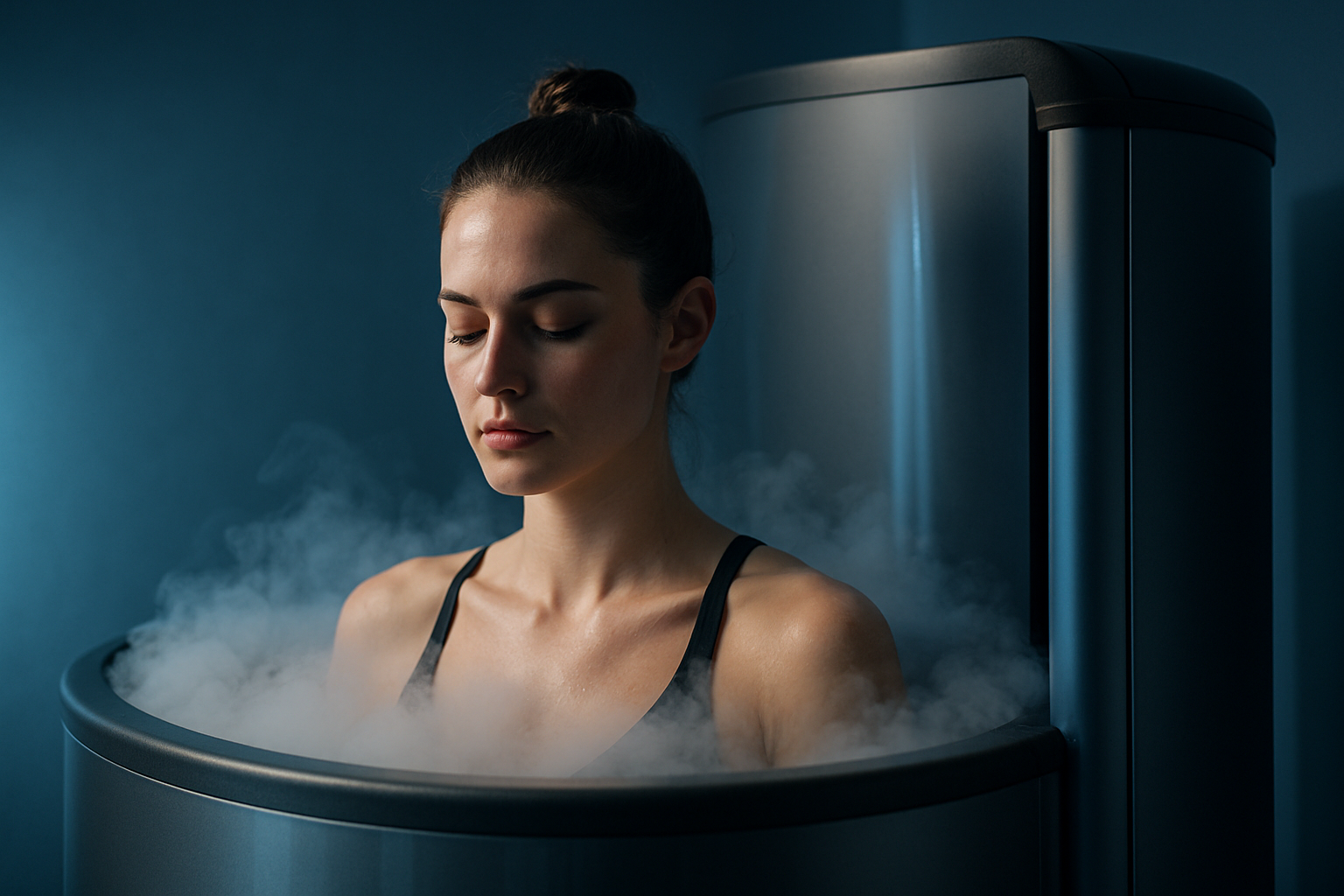Cryotherapy: The Cold Revolution in Beauty and Fitness
Imagine stepping into a chamber chilled to a bone-numbing -200°F, your body enveloped in a misty cloud of nitrogen vapor. This isn't a scene from a sci-fi movie, but rather the latest trend sweeping the beauty and fitness world: cryotherapy. As the frigid air kisses your skin, a cascade of physiological responses kick in, promising everything from reduced inflammation to enhanced athletic performance. This cutting-edge treatment, once reserved for elite athletes, is now making waves in mainstream wellness circles. But what exactly is cryotherapy, and does it live up to the icy hype?

The theory behind cryotherapy is rooted in the body’s natural response to cold. When exposed to extreme temperatures, blood vessels constrict, redirecting blood flow to vital organs. Once out of the cold, blood rushes back to the extremities, potentially flushing out toxins and inflammatory substances. This process is believed to trigger a range of physiological benefits, from reduced muscle soreness to increased metabolism.
From Sports Medicine to Spa Treatment
Cryotherapy’s journey from medical treatment to beauty trend is a fascinating one. Originally developed in Japan in the 1970s to treat rheumatoid arthritis, the therapy quickly gained traction in the sports world. Elite athletes, always on the lookout for recovery shortcuts, embraced whole-body cryotherapy as an alternative to traditional ice baths.
The turning point came in the early 2010s when cryotherapy began appearing in high-end spas and wellness centers. Suddenly, the treatment wasn’t just for professional athletes—it was for anyone looking to boost their health, beauty, and fitness regimen. This shift marked cryotherapy’s evolution from a niche medical treatment to a mainstream wellness trend.
Beauty Benefits: More Than Skin Deep
In the beauty world, cryotherapy has been hailed as a fountain of youth in ice form. Proponents claim that the extreme cold can boost collagen production, tighten pores, and give skin a radiant glow. Some spas offer localized cryotherapy treatments for the face, promising to reduce puffiness, minimize fine lines, and even out skin tone.
While the immediate effects—a rosy flush and tightened skin—are undeniable, the long-term benefits are still under scientific scrutiny. Some studies suggest that cryotherapy can indeed improve skin quality and reduce signs of aging, but more research is needed to fully understand its impact on skin health.
Fitness Frontier: Pushing the Limits of Recovery
In the fitness realm, cryotherapy has become a go-to recovery method for both professional athletes and weekend warriors alike. The promise of reduced inflammation, decreased muscle soreness, and faster recovery times has made it a staple in many training regimens.
Research in this area is more robust, with several studies indicating that cryotherapy can indeed aid in post-exercise recovery. A 2017 study published in the Journal of Strength and Conditioning Research found that whole-body cryotherapy significantly reduced muscle pain and inflammatory markers in athletes after intense exercise.
The Metabolic Boost: Fact or Fiction?
One of the most intriguing claims surrounding cryotherapy is its potential to boost metabolism and aid in weight loss. The theory is that exposure to extreme cold forces the body to work harder to stay warm, burning calories in the process. Some proponents even suggest that a single session can burn up to 800 calories.
While it’s true that cold exposure can increase energy expenditure, the extent of this effect and its long-term impact on weight loss are still debated in scientific circles. A 2018 review in the Journal of Clinical Medicine concluded that while cryotherapy may have some metabolic benefits, more research is needed to establish its efficacy as a weight loss tool.
Risks and Considerations: Navigating the Cold
As with any emerging treatment, cryotherapy comes with its share of risks and considerations. The most immediate concern is the risk of cold burns or frostbite if proper precautions aren’t taken. People with certain medical conditions, such as high blood pressure or heart problems, are advised to avoid cryotherapy altogether.
There’s also the question of regulation. As cryotherapy has moved from medical settings to commercial spas, concerns have been raised about proper training and safety protocols. In 2015, the tragic death of a spa worker in a cryotherapy chamber highlighted the need for stringent safety measures and oversight in the industry.
The Future of Cryotherapy: A Cool Outlook
Despite these challenges, the future of cryotherapy in the beauty and fitness world looks bright—or should we say, frosty. As research continues to explore its potential benefits and risks, cryotherapy is likely to become more refined and tailored to individual needs.
Innovations in the field are already emerging. Localized cryotherapy devices for at-home use are hitting the market, promising to bring the benefits of cold therapy to a broader audience. Meanwhile, some researchers are exploring the potential of combining cryotherapy with other treatments, such as light therapy or compression therapy, to enhance its effects.
As we continue to push the boundaries of what’s possible in beauty and fitness, cryotherapy stands as a testament to our eternal quest for the next big thing in wellness. Whether it’s a passing trend or a lasting revolution remains to be seen, but one thing is certain: in the world of health and beauty, sometimes the coolest innovations come from the coldest places.





